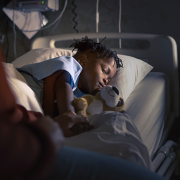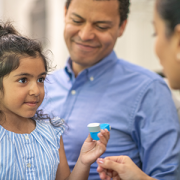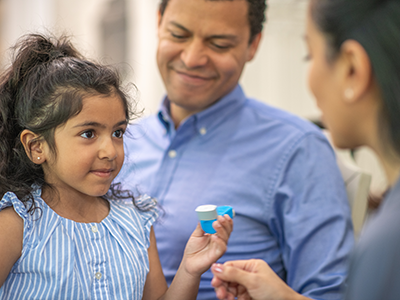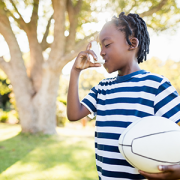Black, Hispanic children at greater risk for complications during hospitalization

The research team found that patients who are Black and Medicaid-insured patients experienced the greatest disparities in postoperative sepsis, a rare complication in which patients suffer from infection that can cause multi-organ failure.
Evaluating more than 5 million pediatric hospital stays nationwide, researchers found children who are Black, Hispanic or insured with Medicaid face a greater risk of health events after surgeries than white patients, according to a new study published in the journal Pediatrics.
“We looked at the data, and we calculated the risks,” said Kavita Parikh, M.D., MSHS, medical director of Quality & Safety Research, research director of the Division of Hospital Medicine and first author on the multi-institute study. “Despite decades of focus on eliminating medical errors, we know that children continue to suffer substantial harms in hospital settings, and our study highlights where children who are Black, Hispanic or insured with Medicaid are at the greatest risk.”
The big picture
The study analyzed data from more than 5.2 million hospitalizations collected by the 2019 Kids’ Inpatient Database, a national repository of data on hospital stays. It includes a 10% sample of newborns and an 80% sample of other pediatric discharges from 4,000 U.S. hospitals. More than 80% of patients were younger than 1 year of age.
The research team found that patients who are Black and Medicaid-insured patients experienced the greatest disparities in postoperative sepsis, a rare complication in which patients suffer from infection that can cause multi-organ failure. Patients who are Hispanic experienced the greatest disparity in postoperative respiratory failure, a complication that can limit breathing and ventilation.
Plausible factors cited include structural racism in the U.S. healthcare system, clinician bias, insufficient cultural responsiveness, communication barriers and limited access to high-quality healthcare.
What’s ahead
The study – “Disparities in Racial, Ethnic, and Payor Groups for Pediatric Safety Events in U.S. Hospitals” – is foundational in understanding what is happening among pediatric patients. Dr. Parikh said that researchers now must conduct further studies into these alarming disparities and qualitative work to understand drivers, with the action-oriented goal of developing interventions to improve patient safety in the hospital for all children.
“We brought together leaders in pediatric medicine, health policy and public health to analyze this data, and we are committed to taking the next steps to improve outcomes for pediatric patients,” Dr. Parikh said. “It will take more patient-centered work and research, resources and multifaceted strategies to resolve these worrying disparities for our pediatric patients nationwide.”

















